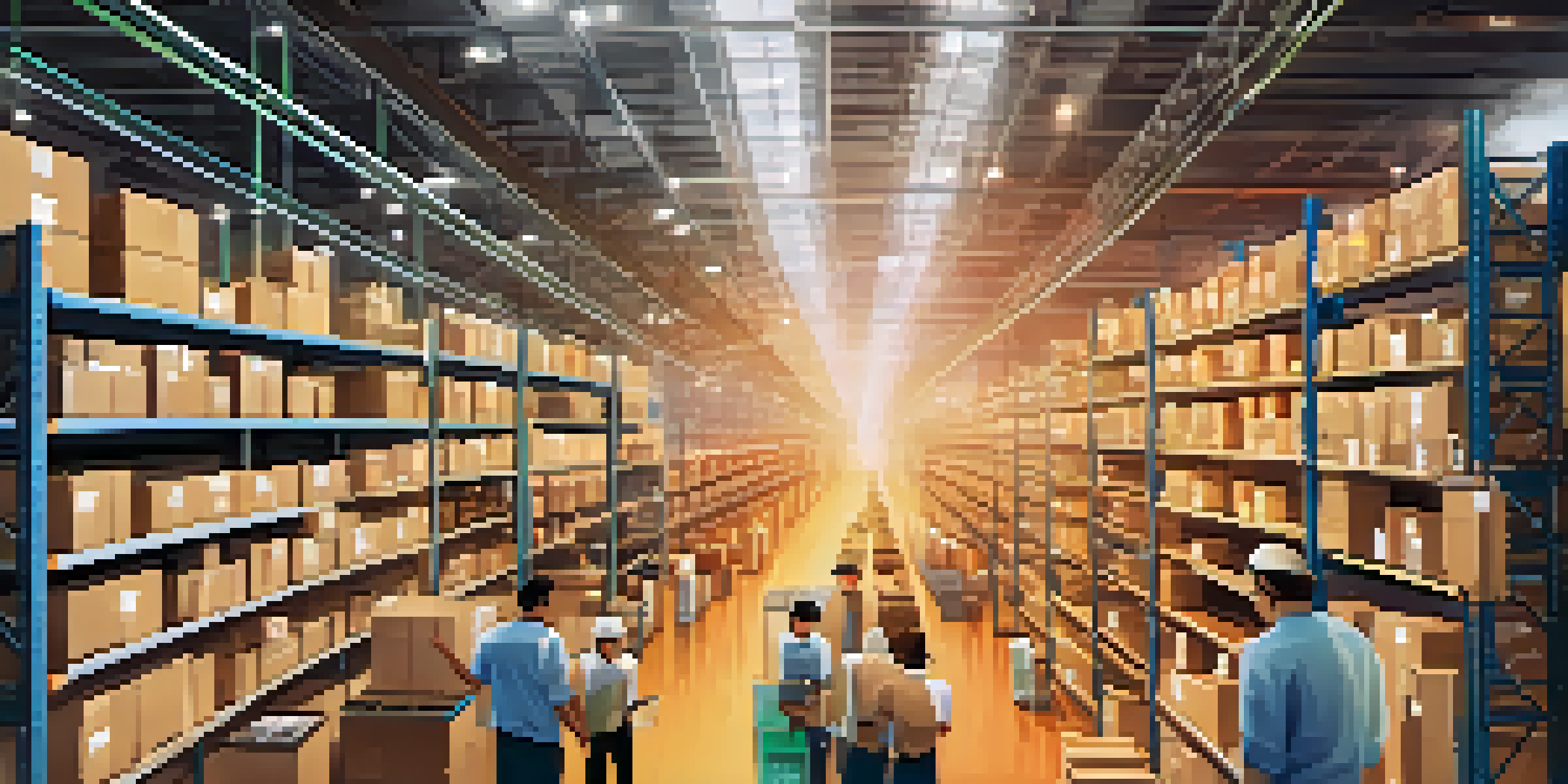IoT in Supply Chain Transparency: Tracking and Visibility

Understanding IoT and Its Role in Supply Chains
The Internet of Things (IoT) refers to the network of interconnected devices that communicate and exchange data. In the context of supply chains, IoT devices can provide real-time data on the location and condition of products. This connectivity transforms how businesses manage logistics, inventory, and overall operations.
The Internet of Things has the potential to transform the way we do business by making our supply chains more efficient and transparent.
Imagine a smart fridge that alerts you when you're running low on milk. Similarly, IoT in supply chains allows companies to monitor stock levels and shipment statuses efficiently. This level of automation and transparency creates a more responsive and agile supply chain.
Through IoT, businesses can reduce delays and improve customer satisfaction by ensuring that products are delivered on time. This foundational understanding of IoT sets the stage for how it enhances visibility and tracking in supply chains.
Enhancing Visibility with Real-Time Tracking
One of the most significant benefits of IoT in supply chains is real-time tracking. With GPS and RFID (Radio Frequency Identification) technologies, companies can monitor their assets at every stage of the supply chain. This visibility helps to identify bottlenecks and optimize routes, ensuring efficient transportation.

For instance, a shipping company can track a container's journey from the port to its final destination. If there’s a delay due to traffic, they can adjust the delivery schedule accordingly. This proactive approach not only saves time but also reduces costs.
IoT Enhances Supply Chain Visibility
IoT technology provides real-time tracking and data sharing, allowing businesses to identify inefficiencies and optimize operations.
Moreover, real-time tracking empowers businesses to provide accurate updates to customers. When consumers can see where their orders are, they feel more in control and satisfied with the service.
Improving Inventory Management with IoT
IoT devices can revolutionize inventory management by providing precise data on stock levels. Sensors placed on shelves can alert managers when items are running low or about to expire. This automation prevents overstocking and stockouts, both of which can be costly for businesses.
In a world where everything is connected, the ability to track and monitor your supply chain in real-time is not just an advantage, it's a necessity.
Consider a retail store that uses IoT to track its inventory. When a product is sold, the system automatically updates inventory levels. This ensures that the store knows exactly what is in stock, minimizing wasted space and resources.
With accurate inventory data, companies can make better purchasing decisions and streamline their supply chains. This efficiency not only saves money but also improves customer satisfaction by ensuring that popular products are always available.
Enhancing Quality Control Through IoT Data
Another critical aspect of supply chain transparency is quality control. IoT devices can monitor environmental conditions such as temperature and humidity, which are vital for perishable goods. By tracking these factors, businesses can ensure that products remain safe and meet quality standards.
For example, a food distributor can use IoT sensors to monitor the temperature of refrigerated trucks. If the temperature rises above a certain threshold, an alert is triggered, allowing immediate action to be taken. This capability helps prevent spoilage and ensures compliance with safety regulations.
Improved Inventory Management
IoT sensors enable precise inventory tracking, preventing overstocking and stockouts, and ensuring products are readily available.
Through enhanced quality control, companies can reduce waste and maintain consumer trust. When customers know they are receiving high-quality products, they are more likely to remain loyal.
Cost Reduction Through Efficient Supply Chain Practices
Integrating IoT into supply chains can lead to significant cost reductions. By improving tracking and visibility, companies can identify inefficiencies and streamline operations. This capability translates into lower transportation costs, reduced labor expenses, and minimized waste.
For instance, a company using IoT technology may discover that certain delivery routes are consistently slower. By optimizing these routes or adjusting delivery times, they can save on fuel and labor costs. This data-driven approach leads to smarter spending.
In the long run, these cost savings can be reinvested into the business or passed on to consumers, creating a competitive advantage in the marketplace.
Building Stronger Relationships with Suppliers
IoT not only enhances transparency within a company but also fosters stronger relationships with suppliers. With real-time data sharing, businesses can collaborate more effectively with their suppliers. This transparency builds trust and ensures that all parties are informed about inventory levels and order statuses.
For example, a manufacturer can share live data with suppliers about production schedules and material needs. This collaboration allows suppliers to plan their deliveries and production accordingly, reducing lead times and improving efficiency.
Strengthened Supplier Relationships
Real-time data sharing through IoT fosters collaboration with suppliers, enhancing trust and responsiveness to demand changes.
By working together more closely, businesses and suppliers can respond quickly to changes in demand, ultimately leading to a more resilient supply chain.
The Future of Supply Chain Transparency with IoT
As technology continues to evolve, the role of IoT in supply chains will only grow. Future advancements may include more sophisticated AI algorithms that analyze IoT data for predictive insights. This capability could enable businesses to anticipate disruptions and adjust their strategies proactively.
Imagine a supply chain that can predict a potential shortage of materials due to a natural disaster and automatically reroute orders to avoid delays. This level of foresight could revolutionize how businesses operate and respond to global challenges.

The future of supply chain transparency looks promising, and companies that embrace IoT will be well-positioned to lead in their industries.